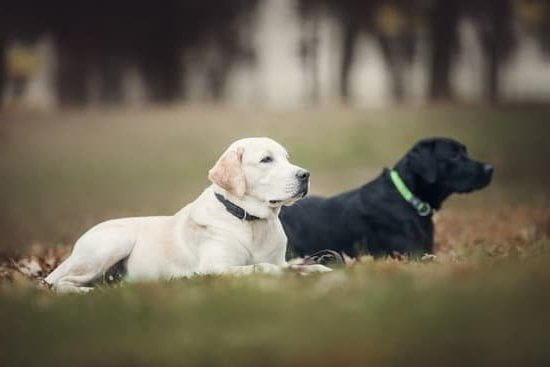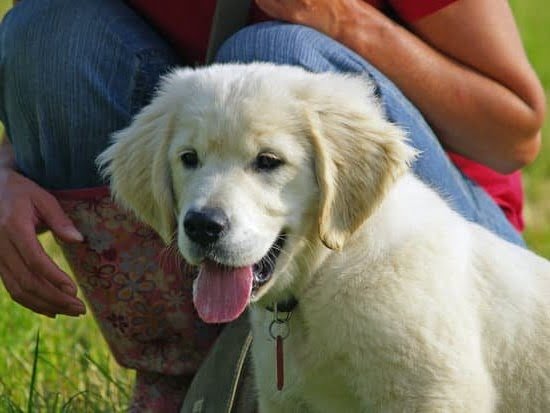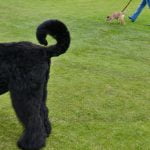Play biting is a common behavior in dogs, especially during their younger years when they are still learning and exploring their environment. While it may seem harmless at first, it is essential to train your dog not to play bite to prevent any potential issues in the future. In this article, we will delve into how to train your dog not to play bite by understanding the reasons behind this behavior and implementing effective training techniques.
Dogs use play biting as a way to engage with their surroundings and interact with their owners. However, it is crucial to establish boundaries early on to ensure that this behavior does not escalate into something more serious. By setting clear rules for playtime and teaching your dog what is acceptable behavior, you can prevent any unwanted biting incidents in the future.
One of the key aspects of training your dog not to play bite is consistency. By maintaining a routine and enforcing rules consistently, you can reinforce positive behaviors and discourage play biting. Additionally, using reward-based training techniques and providing alternative toys and activities can help redirect your dog’s behavior towards more appropriate ways of playing. Understanding your dog’s body language can also help you identify warning signs of play biting and address them before they escalate.
The Importance of Training Your Dog Not to Play Bite
The behavior of play biting is common in dogs, especially during puppyhood, as they explore and interact with their environment. While it may seem harmless at first, allowing your dog to play bite can lead to issues in the future, such as aggression towards humans or other animals.
Therefore, it is crucial to train your dog not to play bite from an early age. By teaching them appropriate behaviors and setting boundaries, you can prevent play biting from becoming a problem behavior.
One important aspect of training your dog not to play bite is setting clear rules for playtime. This includes establishing boundaries and teaching your dog what behavior is acceptable during interactions with you and other pets. Consistency is key when enforcing these rules, as dogs thrive on routine and structure. By consistently reinforcing the message that play biting is not allowed, you can help your dog understand what is expected of them.
Positive reinforcement is a highly effective training technique when teaching your dog not to play bite. By rewarding good behavior with treats, praise, or toys, you can encourage your dog to engage in alternative activities instead of play biting.
Redirecting their behavior towards appropriate toys and activities can also help prevent play biting incidents. Providing your dog with interactive toys and engaging them in games like fetch or tug-of-war can redirect their natural urge to nip and bite during playtime.
| Training Technique | Effectiveness |
|---|---|
| Positive Reinforcement | Highly effective in encouraging good behavior |
| Redirecting Behavior | Helps prevent play biting incidents by engaging dogs in alternative activities |
Setting Boundaries
Teaching Limits During Playtime
When it comes to training a dog not to play bite, setting boundaries is crucial. It’s important to establish rules for playtime early on so that your furry friend understands what behavior is acceptable and what is not. One effective way to do this is by implementing a “no teeth on skin” rule.
This means that whenever your dog starts to play bite, you immediately stop the play session and withhold attention. Consistency in enforcing this rule will help your dog understand that biting leads to the end of fun.
Using Commands and Signals
Another technique for setting boundaries during playtime is using commands and signals to communicate with your dog. For example, teaching your dog the “gentle” command can be helpful in encouraging them to play without using their teeth aggressively. When they follow the command correctly, reward them with treats or praise. This positive reinforcement will reinforce the desired behavior and encourage your dog to continue playing gently without resorting to biting.
Supervising Play Sessions
It’s essential to closely monitor play sessions between your dog and other pets or family members, especially during training periods. If you notice any signs of aggressive play biting, intervene immediately by redirecting their attention to a more appropriate toy or activity.
By supervising these interactions and correcting unwanted behavior promptly, you help reinforce the rules you’ve set for playtime effectively. Remember that consistency is key in training your dog not to play bite, so make sure to enforce the boundaries every time they engage in undesirable biting behavior.
Positive Reinforcement
Training a dog not to play bite can be a challenge, but with the right techniques and consistency, it is definitely achievable. One effective method that has been proven to work well is positive reinforcement training. This involves rewarding your dog for good behavior rather than punishing them for unwanted actions. By using treats, praise, or toys as rewards, you can encourage your dog to exhibit desirable behavior.
When implementing positive reinforcement training techniques to address play biting, it is important to be clear and consistent in your communication with your furry friend. Make sure to reward them immediately after they exhibit good behavior, such as playing without nipping or gently mouthing instead of biting. By consistently rewarding the desired behavior, you are reinforcing the idea that non-play biting behavior is what earns them praise and treats.
To effectively train your dog not to play bite using positive reinforcement, consider the following tips:
- Use high-value treats that your dog loves
- Give verbal praise and petting when they behave appropriately during playtime
- Provide a cue word like “gentle” or “easy” when interacting with your dog to help them understand what behavior is expected
By incorporating positive reinforcement training techniques into your daily interactions with your dog, you can help them learn that play biting is not acceptable while strengthening the bond between you both. Remember that patience and consistency are key when implementing any training method, including positive reinforcement. With time and practice, you will see progress in your dog’s behavior and enjoy a more harmonious relationship during playtime.
Redirecting Behavior
Introducing Interactive Toys
One effective way to redirect a dog’s play biting behavior is by providing them with interactive toys that are specifically designed to keep their minds and mouths engaged. Chew toys, puzzle toys, and treat-dispensing toys can help satisfy their natural urge to chew and play while teaching them appropriate ways to channel their energy. When they start nipping during playtime, immediately hand them one of these toys to redirect their attention.
Engaging in Interactive Play
Another way to encourage your dog to refrain from play biting is by engaging in interactive play sessions that promote positive behaviors. Activities such as fetch, tug-of-war, and agility training not only provide mental stimulation but also strengthen the bond between you and your furry friend. By channeling their energy into structured activities, you can help reduce the likelihood of play biting during playtime.
Implementing Training Commands
In addition to offering alternative toys and engaging in interactive play, it’s essential to incorporate training commands that reinforce good behavior when your dog starts to exhibit unwanted play biting tendencies. Utilize commands such as “sit,” “stay,” or “leave it” during play sessions to redirect their focus and reward them with treats or praise for obeying.
Consistency in using these commands will help your dog understand what is expected of them and learn how to control their impulses effectively. Through a combination of interactive toys, engaging activities, and consistent training commands, you can successfully train your dog not to play bite and foster a harmonious relationship based on mutual respect and understanding.
Consistency Is Key
When it comes to training your dog not to play bite, consistency is crucial. Dogs thrive on routine and clear rules, so establishing a consistent training schedule will help reinforce the desired behavior. Here are some tips on how to maintain a routine and enforce rules effectively:
- Set aside specific times for play and training sessions each day to create structure for your dog.
- Use the same commands and cues consistently during training to help your dog understand what is expected of them.
- Be patient and persistent in enforcing rules – do not give mixed signals or allow exceptions to the rules you have set.
Consistency also extends beyond just training sessions. It is important to remain consistent in your interactions with your dog throughout the day. This means reinforcing good behavior constantly, not just during training sessions. By maintaining a routine and enforcing rules consistently, you will help your dog understand what is acceptable behavior and what is not.
Moreover, consistency also involves everyone in the household following the same set of rules when it comes to your dog’s behavior. Ensure that all family members are on board with the training plan and are consistently reinforcing the same expectations. This will prevent confusion for your dog and make it easier for them to learn how to behave appropriately.
Understanding Body Language
Play biting is a common behavior in dogs, especially during puppyhood. However, it is essential to train your dog not to engage in this behavior as it can lead to potential issues down the line. Understanding the body language associated with play biting is crucial in effectively addressing and correcting this behavior.
One key aspect of training your dog not to play bite is being able to identify the warning signs that lead up to this behavior. Dogs often exhibit subtle cues before they start nipping or biting during playtime. These can include stiff body language, direct eye contact, raised hackles, growling, and showing teeth. By recognizing these signs early on, you can intervene and redirect their behavior before it escalates into play biting.
To prevent play biting, it is important to establish boundaries during playtime. Encourage appropriate play behaviors by setting rules and reinforcing them consistently. When your dog starts exhibiting signs of wanting to play bite, redirect their focus onto a chew toy or engage them in a different activity that promotes positive interaction. With patience and consistent training techniques, you can effectively teach your dog how to interact without resorting to play biting.
Seeking Professional Help
Training a dog not to play bite can be a challenging task, especially if the behavior is deeply ingrained in their habits. In some cases, despite your best efforts to address the issue through training and positive reinforcement, you may find that your dog continues to exhibit play biting behavior. This is when it may be beneficial to seek professional help from a dog trainer or behaviorist.
Professional trainers and behaviorists have the expertise and experience to evaluate your dog’s behavior, identify the root cause of the play biting, and develop a customized training plan to address the issue effectively. They can provide valuable insights into why your dog engages in play biting and offer practical solutions on how to modify this behavior. By working with a professional, you can receive personalized guidance on training techniques that are tailored to your dog’s specific needs.
It is essential to consult a trainer or behaviorist if your dog’s play biting becomes aggressive or uncontrollable. Aggression in dogs should never be ignored or dismissed as simply playful behavior. A professional can assess the situation accurately and implement strategies to manage and modify your dog’s behavior effectively. Additionally, seeking help from a trainer or behaviorist demonstrates your commitment to addressing the issue responsibly and ensuring the well-being of both your pet and those around them.
| Professional Help | Benefits |
|---|---|
| Expert Evaluation | Identifying root cause |
| Customized Training Plan | Tailored solutions for specific needs |
Conclusion
Having a well-trained dog that does not play bite brings immense joy and satisfaction to both pet owners and their furry companions. By understanding the behavior of play biting and the importance of training them not to engage in this behavior, you can create a harmonious relationship with your pet.
Setting boundaries and establishing rules for playtime is crucial in teaching your dog how to interact with you and others without resorting to play biting. Positive reinforcement techniques, such as rewarding good behaviors and ignoring or redirecting unwanted ones, are effective ways to train your dog not to play bite. Consistency in enforcing these rules is key to ensuring your dog understands what is expected of them during playtime.
By providing alternative toys and activities for your dog to engage in, you can redirect their behavior away from play biting towards more appropriate forms of play. Additionally, being able to identify warning signs of play biting through understanding their body language can help prevent such behaviors before they escalate.
Remember, if you encounter difficulties in training your dog not to play bite, do not hesitate to seek professional help from a trainer or behaviorist who can provide guidance tailored to your specific needs. With patience, dedication, and the right techniques, you can enjoy the company of a well-trained, non-play biting dog for years to come.
Frequently Asked Questions
How Do I Get My Dog to Stop Playfully Biting?
To get your dog to stop playfully biting, it is important to provide consistent training and redirection. Teach your dog appropriate chew toys and use positive reinforcement when they interact appropriately.
How Do You Discipline a Dog for Play Biting?
Disciplining a dog for play biting should focus on redirection and positive reinforcement. Avoid physical punishment as it can lead to fear and aggression. Use commands like “no bite” and praise good behavior.
What Age Do Dogs Stop Play Biting?
Dogs typically stop play biting as they mature and learn appropriate behavior, which is usually around 6-9 months of age. Consistent training, socialization, and proper chew toy use can help accelerate this process.

Welcome to the blog! I am a professional dog trainer and have been working with dogs for many years. In this blog, I will be discussing various topics related to dog training, including tips, tricks, and advice. I hope you find this information helpful and informative. Thanks for reading!





